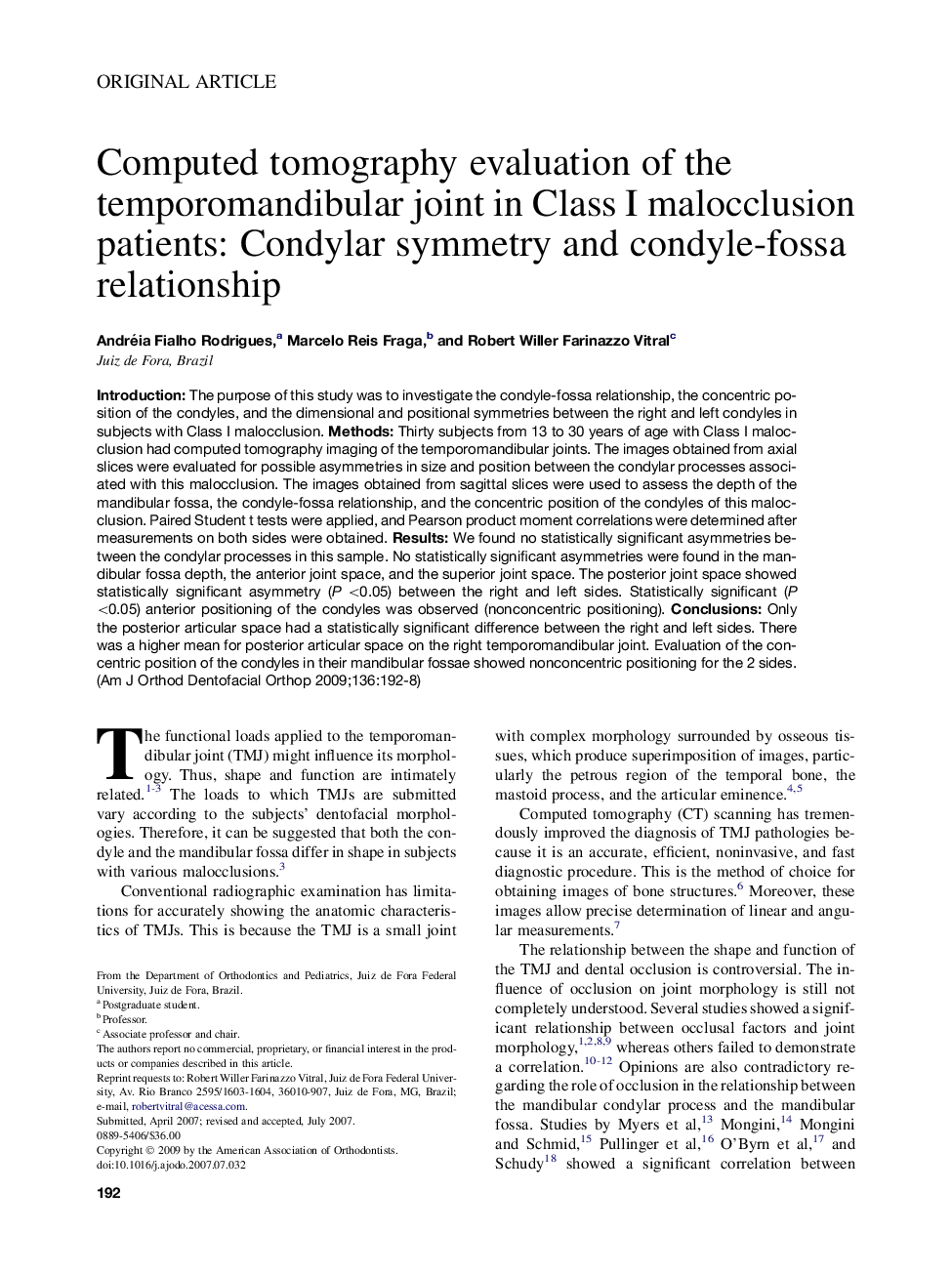| Article ID | Journal | Published Year | Pages | File Type |
|---|---|---|---|---|
| 3118844 | American Journal of Orthodontics and Dentofacial Orthopedics | 2009 | 7 Pages |
IntroductionThe purpose of this study was to investigate the condyle-fossa relationship, the concentric position of the condyles, and the dimensional and positional symmetries between the right and left condyles in subjects with Class I malocclusion.MethodsThirty subjects from 13 to 30 years of age with Class I malocclusion had computed tomography imaging of the temporomandibular joints. The images obtained from axial slices were evaluated for possible asymmetries in size and position between the condylar processes associated with this malocclusion. The images obtained from sagittal slices were used to assess the depth of the mandibular fossa, the condyle-fossa relationship, and the concentric position of the condyles of this malocclusion. Paired Student t tests were applied, and Pearson product moment correlations were determined after measurements on both sides were obtained.ResultsWe found no statistically significant asymmetries between the condylar processes in this sample. No statistically significant asymmetries were found in the mandibular fossa depth, the anterior joint space, and the superior joint space. The posterior joint space showed statistically significant asymmetry (P <0.05) between the right and left sides. Statistically significant (P <0.05) anterior positioning of the condyles was observed (nonconcentric positioning).ConclusionsOnly the posterior articular space had a statistically significant difference between the right and left sides. There was a higher mean for posterior articular space on the right temporomandibular joint. Evaluation of the concentric position of the condyles in their mandibular fossae showed nonconcentric positioning for the 2 sides.
